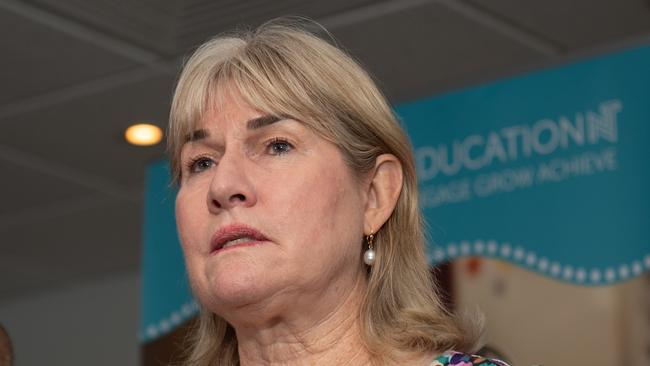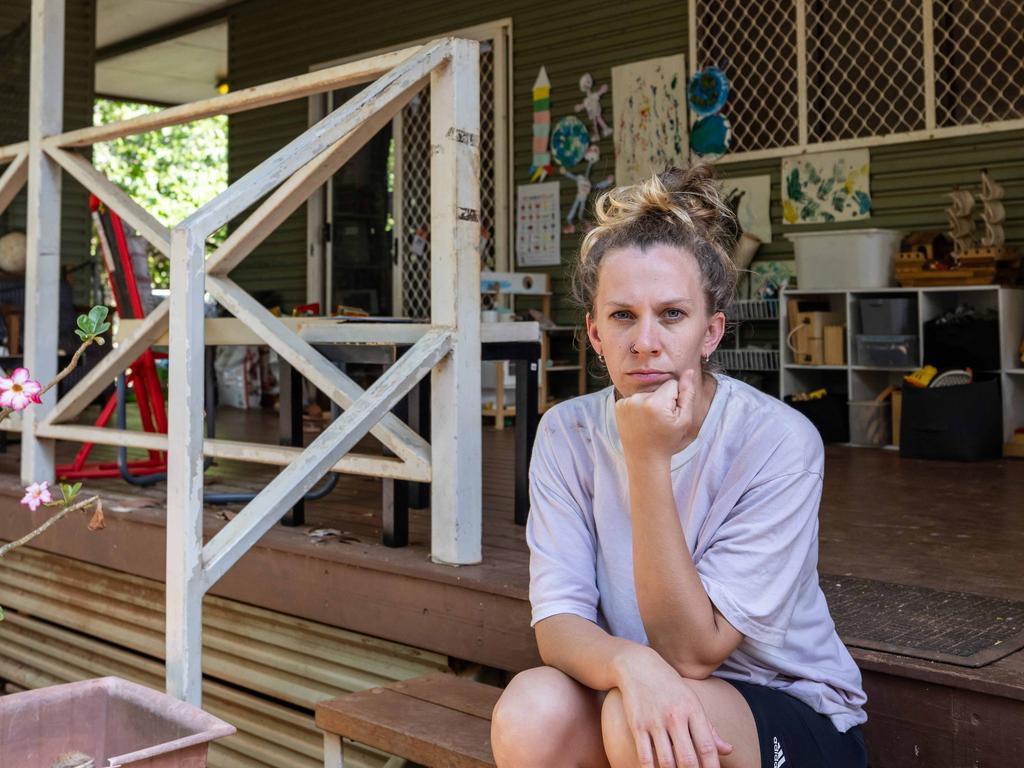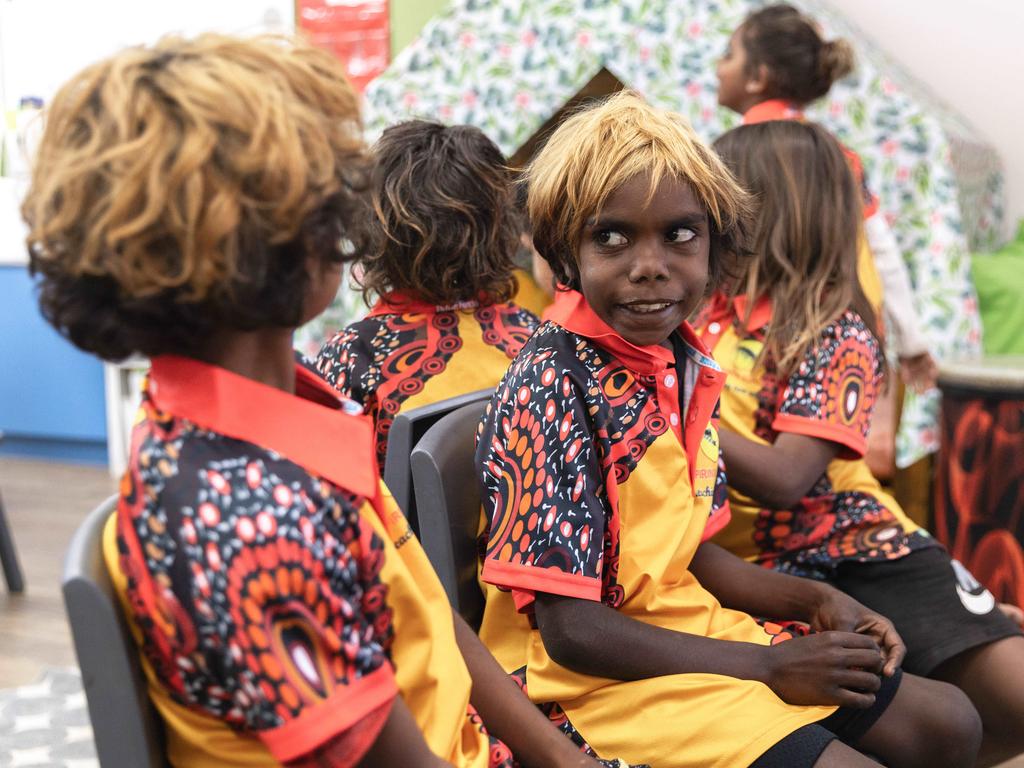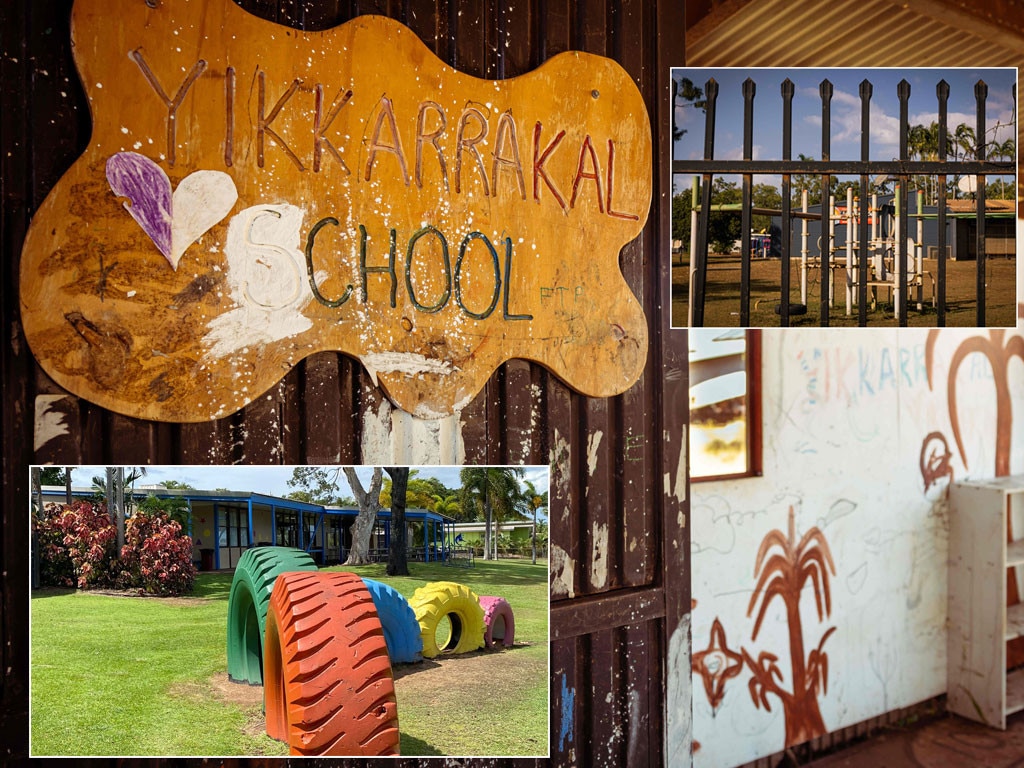NT schools in crisis: No choice as children ‘lost’ to life of crime
A decade-old policy that stopped providing high school education in remote Indigenous communities in the Northern Territory has had ‘disastrously bad’ outcomes, research has shown.

A decade-old policy that stopped providing high school education in remote Indigenous communities in the Northern Territory has had “disastrously bad” outcomes, university-led research has shown, with some of the affected children joining criminal gangs.
In one affected community, almost one in 10 students had never been to high school, and almost three-quarters (74 per cent) dropped out before the end of year 10 and were “smoking”, “self-harming”, “long-grassing” (living on the streets or bushland) or “married up” instead.
One elder quoted in the report, published by the Australian National University, said: “They are bored, lacking in any direction, no hope for the future. Lost! That’s what they are, lost.”
Seventy-eight remote NT communities have no access to local secondary education as a result of the 2014 government review, “A Share in the Future”.
Instead, students face what has been called a “choice-less choice”.
According to NT government policy, when remote Indigenous students reach year 8, they can move to a town with a high school or attend boarding school, interstate or in the NT.
If they continue school locally, they can only access post-primary literacy and numeracy programs delivered in a primary school.
NT Education Minister Eva Lawler confirmed these were the options for secondary students but did not comment on the impact of the policy.
Although many Indigenous students across Australia travel to boarding school, the Northern Territory is the only jurisdiction that has a policy of not providing local secondary education.
The NT Department of Education is reviewing secondary education to “assess and develop reform options to strengthen secondary education provision with a focus on increased participation, retention and completion, particularly in remote areas”.
NT acting Children’s Commissioner Nicole Hucks said the lack of choice was an issue. “Children have the right to an education,” she said. “This right extends to a child’s choice in their secondary education attainment, including accessing secondary education in their home community.”
ANU research fellow Marnie O’Bryan said the “draconian” policy of rolling back secondary education was at odds with “what is perceived to be the inalienable right of parents to choose where their children go to school”, which she said informed education funding models in Australia.
“That’s the argument that is constantly put to us; that independent, non-government schools should be able to receive government funding, because it enables parental choice,” Dr O’Bryan says. “But in remote Australia, nothing could be further from the truth. Actually, parents do not have a choice.”
Since 2018, she has been part of a research team studying long-term impacts of the loss of local secondary education on a single community, which can’t be named because of research ethics protocols. The research was commissioned by community elders, who were “tearing their hair out” over what has happened to their children.
“There are young people in that cohort who have now joined a gang, which is marauding up and down the countryside,” Dr O’Bryan said. “There is a direct correlation between them having dropped out of school and becoming criminalised.”
Dr O’Bryan and her team mapped the education pathways of 100 young people (aged 12-21) and described the educational outcomes as “disastrously bad”.
In 2019, of 80 young people (aged 12-18), nine had never attended high school.
According to an NT Department of Education spokesperson, in July 2023 there were 929 students in boarding schools being helped by their Transition Support Unit. One-third were boarding interstate, the rest at Territory boarding schools.
The NT government does not fund students attending interstate boarding schools, who receive scholarships or federal funding.
As part of her role as education manager of the Groote Eylandt and Bickerton Island Primary College Aboriginal Corporation, Josie Skelton supports 37 kids from Groote boarding off the island. She says they work hard to match kids with schools, sending families to spend time there before they commit to enrolling.
She says boarding works wonderfully for some students but others need a lot of emotional support.
Professor John Guenther, research leader for education and training with the Batchelor Institute of Indigenous Tertiary Education, said he had seen examples of young people who had returned with English-language proficiency and good experiences.
However, he said the support services for off-country boarding – which compensate for homesickness, mental health concerns and even attempted suicides – pointed to underlying problems.
“The fact that you’ve got to provide these extra supports says there’s a problem,” he said. “And that problem is something to do with removing kids from their home environment, their culture and their family.”
In the community Dr O’Bryan studied, there were 56 young people who travelled to cities all over Australia for boarding school. However, she said the gaps in the primary education they had received in their remote community largely set them up for failure.
“Every young person coming out of grade six in that community and being expected to transition to a mainstream boarding school was under a grade two literacy level,” she said. “And they were being sent to some of the highest-performing schools in Australia. Most didn’t last a couple of weeks. And their self-esteem was totally battered.”
Dr O’Bryan said while students who went to boarding school receive generous funding, in 2019, students who stayed in community were often unfunded, due to attendance-based funding.
“I think there is a perception in Australia that we’ve tried everything in remote education,” Dr O’Bryan said. “(People think) it’s too expensive. It’s too hard. And actually, it’s not true. If you look at the study we did, there were 58 young people of secondary school age living in that community. The school was receiving funding for 11 of them. Forty-seven young people were not having a single dollar spent on them.”
The challenges of boarding far from community have inspired some on-country boarding facilities, at Tiwi College, on Melville Island north of Darwin, and at the government Homeland Learning Centre in Garrthalala, a two-hour drive southwest of Nhulunbuy.
But Dr O’Bryan said it would take a lot for the Northern Territory to recover from “10 years of atrophy in remote secondary education”, which would require the government to “rebuild systems from the ground up”.







To join the conversation, please log in. Don't have an account? Register
Join the conversation, you are commenting as Logout